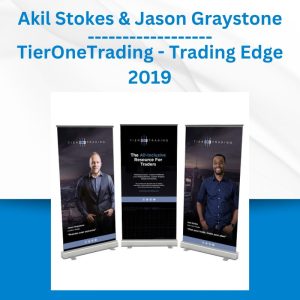*** Proof of Product ***
Exploring the Essential Features of “Force and Power – Maximizing Performance with Velocity-Based Training”
Velocity-Based Training (VBT) is a hot topic in the strength and conditioning industry. Over the last few years, there’s been a surge of VBT research and various ways to implement it, but nothing concrete enough to satisfy us.
So we started experimenting.
The Two Questions
As we dove into this project, we were looking for ways to optimize force production in our athletes.
Why?
You see, as we were working through our system, we had an epiphany…
Strength does not move us. Force does.
Faster athletes produce more force in less time.
After months of research, the two main questions that stuck around were:
- How much force can I produce?
- And how quickly can I produce it?
You see, most athletics are dependent on time. A powerlifter has infinite time to complete a lift, sure, but if a lineman reacts too slowly, he’s getting trampled. Football coaches everywhere have stories about a strong kid on the line who is constantly getting beat. What can you do to help this kid?
Answer: pay attention to the velocity at which he moves.
The problem, though, is that this opposes decades of traditional strength and conditioning.
They just need to get stronger!
Put more weight on the bar!
We’re not building sissies here!
Does any of that sound familiar?
Coaches all over the world focus on strength — and it works for some athletes — but what about those who don’t benefit from getting stronger?
Strength is Overrated
That’s right, strength is overrated.
Remember: the goal of training is not to get stronger. Performance is the goal of training.
We need a new model to train athletes. One which accepts that making an athlete “stronger” is sometimes the wrong choice.
This model has never existed… until now.
So what do I do?
We love actionable steps, but when we initially bought some velocity-tracking technology, we didn’t have much to go on.
So we dove into the research.
Side note: Have you ever clicked on an interesting YouTube video — maybe a short lecture, maybe a stand up comedy routine — and then find yourself in parts of the internet you wish you could forget?
We had six months like that, but with scholarly research articles.
At the time, all this work was necessary. But after going through all of these papers, we knew we could simplify things. We didn’t want our peers to go through the same torture.
So we decided to make a manual.
Steal Our System!
Velocity-based training is reshaping our industry. How can you find a system that tells you exactly what data to gather, how to interpret that data, and what changes to make to your athletes’ programs?
Well, you could go through the research out there. If you want to do all the reading and months of work that we did, don’t let us stop you. That would be a good place to start.
But if you have a job, family, or just other stuff you’d rather do with your time, this manual is here to help.
There are other products out there, but none are quite like this one.
Here are some questions we answer in the manual:
- Should I focus on weight lifted? Or force output? What if I don’t have a force plate?
- Which athletes will benefit the most from accomodating resistance (i.e. bands, chains)?
- How is a strong athlete different from a quick athlete? Does it matter? (Spoiler: yes it does)
- How can I maximize the stretch shortening cycle to produce more force in less time?
Here’s the full outline of the book.
Please see the full list of alternative group-buy courses available here: https://lunacourse.com/shop/










 Sovereign Man Confidential - Renunciation Video
Sovereign Man Confidential - Renunciation Video  Erik Banks - Alternative Risk Transfer
Erik Banks - Alternative Risk Transfer  Emanuele Bonanni - My Trading Way
Emanuele Bonanni - My Trading Way  Matan Feldman - The 13-Week Cash Flow Modeling - Wall Street Prep
Matan Feldman - The 13-Week Cash Flow Modeling - Wall Street Prep  The Daily Traders – Exclusive Trading Mentorship Group
The Daily Traders – Exclusive Trading Mentorship Group  Money Miracle - George Angell - Use Other Peoples Money To Make You Rich
Money Miracle - George Angell - Use Other Peoples Money To Make You Rich  Simpler Trading - Bruce Marshall - The Options Defense Course
Simpler Trading - Bruce Marshall - The Options Defense Course  George Fontanills & Tom Gentile - Optionetics Wealth Without Worry Course
George Fontanills & Tom Gentile - Optionetics Wealth Without Worry Course  Fred Haug - Virtual Wholesaling Simplified
Fred Haug - Virtual Wholesaling Simplified  Chris Capre - Advanced Price Action Ongoing Training & Webinars
Chris Capre - Advanced Price Action Ongoing Training & Webinars  Forexmentor - Recurring Forex Patterns
Forexmentor - Recurring Forex Patterns  Toshko Raychev - Profit System + ITF Assistant
Toshko Raychev - Profit System + ITF Assistant  SMB - Options Training
SMB - Options Training  Julie Stoian & Cathy Olson - Launch Gorgeous - Funnel Gorgeous Bundle
Julie Stoian & Cathy Olson - Launch Gorgeous - Funnel Gorgeous Bundle  Crypto Dan - The Crypto Investing Blueprint To Financial Freedom By 2025
Crypto Dan - The Crypto Investing Blueprint To Financial Freedom By 2025  George Fontanills & Tom Gentile - Optionetics 6 DVD Series Home Study Course (Digital Download)
George Fontanills & Tom Gentile - Optionetics 6 DVD Series Home Study Course (Digital Download)  Greg Loehr - Advanced Option Trading With Broken Wing Butterflies
Greg Loehr - Advanced Option Trading With Broken Wing Butterflies  Go Java Full Stack - Spring Boot and Angular
Go Java Full Stack - Spring Boot and Angular  Dave Landry - Stock Selection Course
Dave Landry - Stock Selection Course